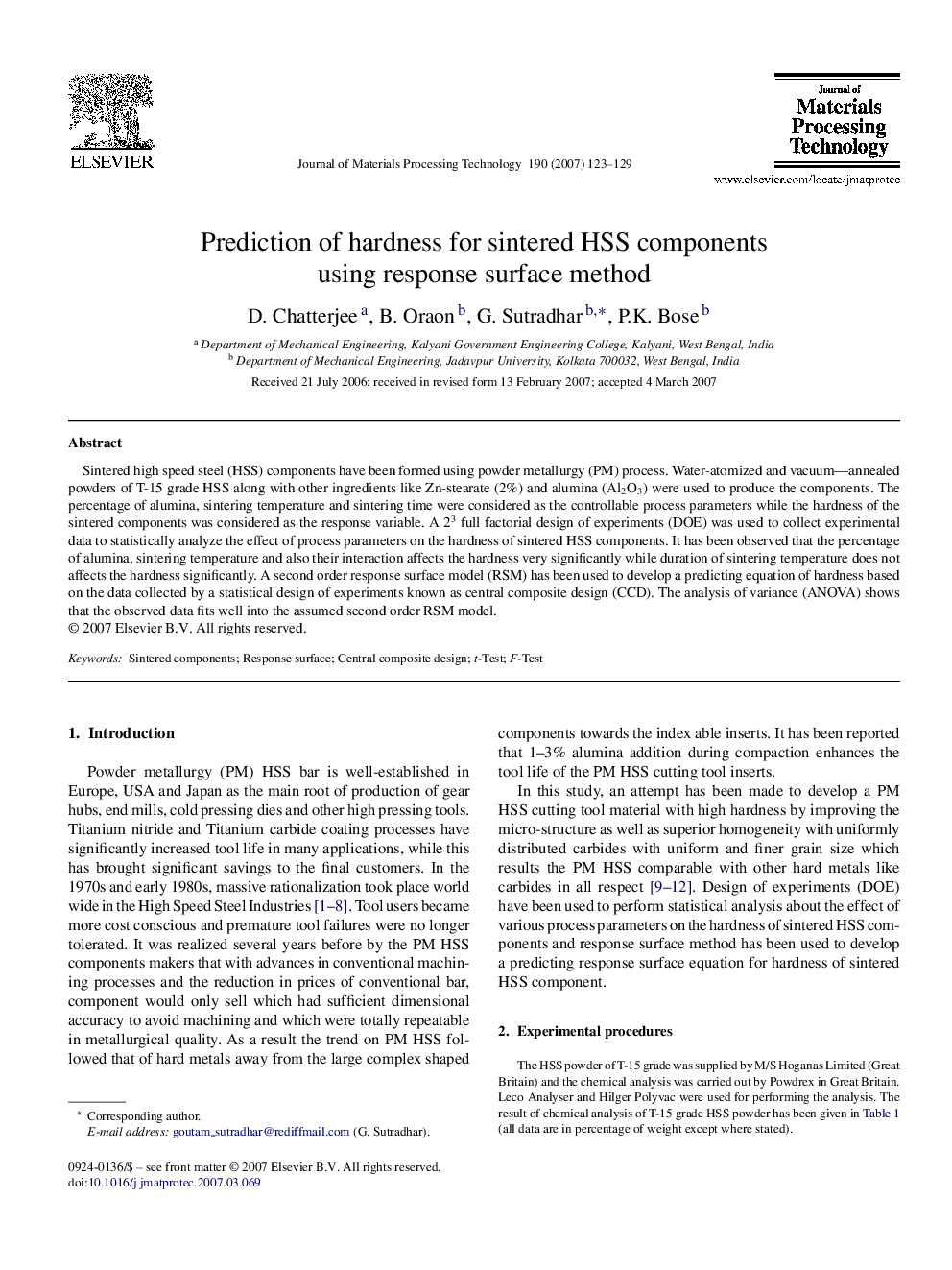| Article ID | Journal | Published Year | Pages | File Type |
|---|---|---|---|---|
| 794040 | Journal of Materials Processing Technology | 2007 | 7 Pages |
Sintered high speed steel (HSS) components have been formed using powder metallurgy (PM) process. Water-atomized and vacuum—annealed powders of T-15 grade HSS along with other ingredients like Zn-stearate (2%) and alumina (Al2O3) were used to produce the components. The percentage of alumina, sintering temperature and sintering time were considered as the controllable process parameters while the hardness of the sintered components was considered as the response variable. A 23 full factorial design of experiments (DOE) was used to collect experimental data to statistically analyze the effect of process parameters on the hardness of sintered HSS components. It has been observed that the percentage of alumina, sintering temperature and also their interaction affects the hardness very significantly while duration of sintering temperature does not affects the hardness significantly. A second order response surface model (RSM) has been used to develop a predicting equation of hardness based on the data collected by a statistical design of experiments known as central composite design (CCD). The analysis of variance (ANOVA) shows that the observed data fits well into the assumed second order RSM model.
